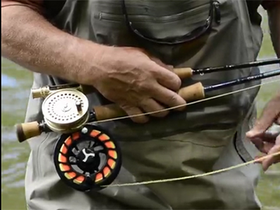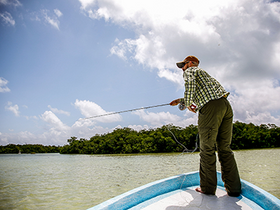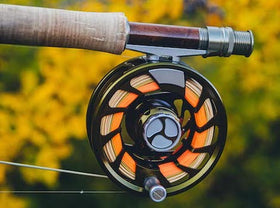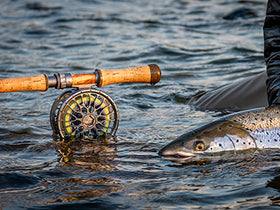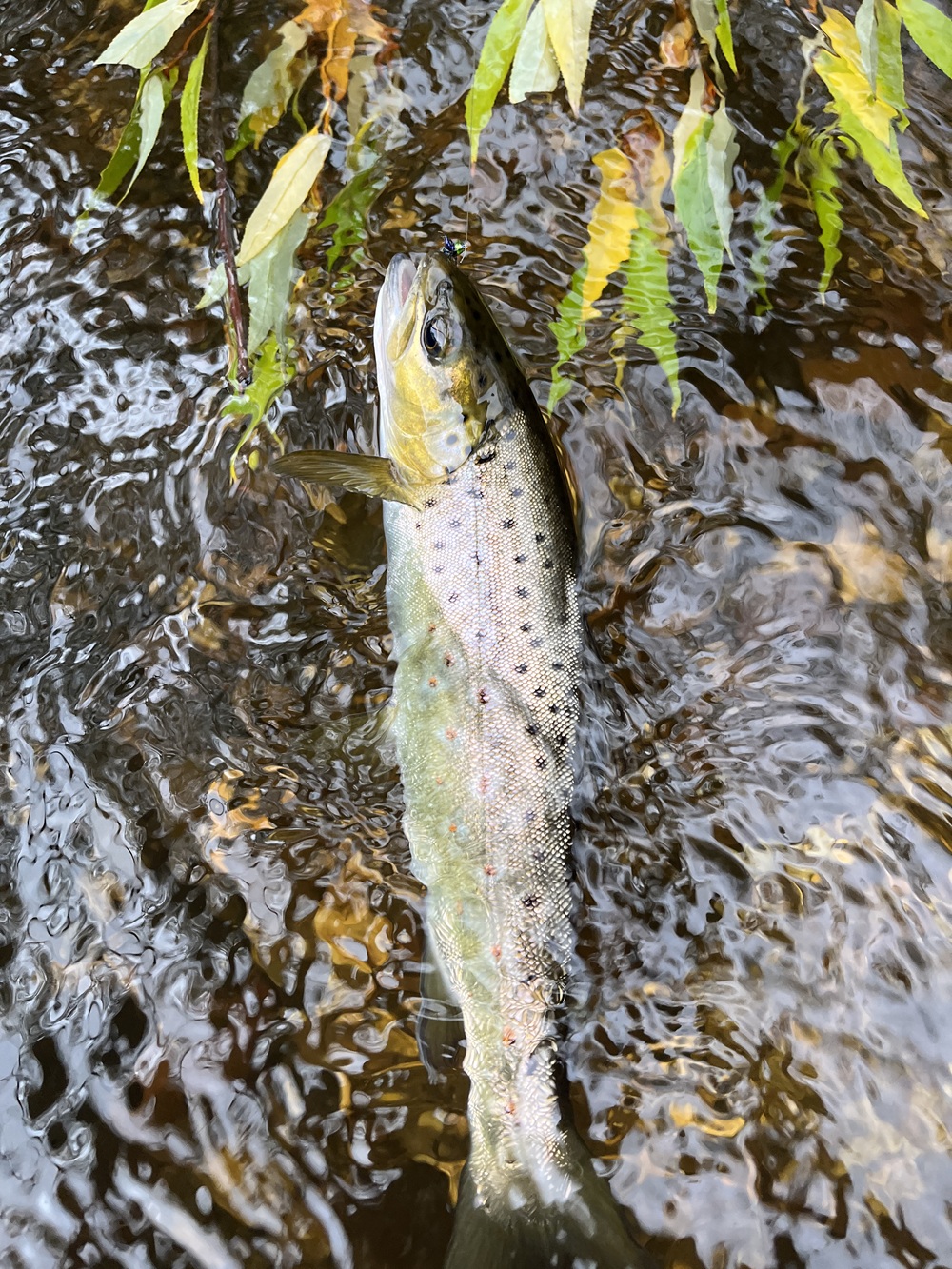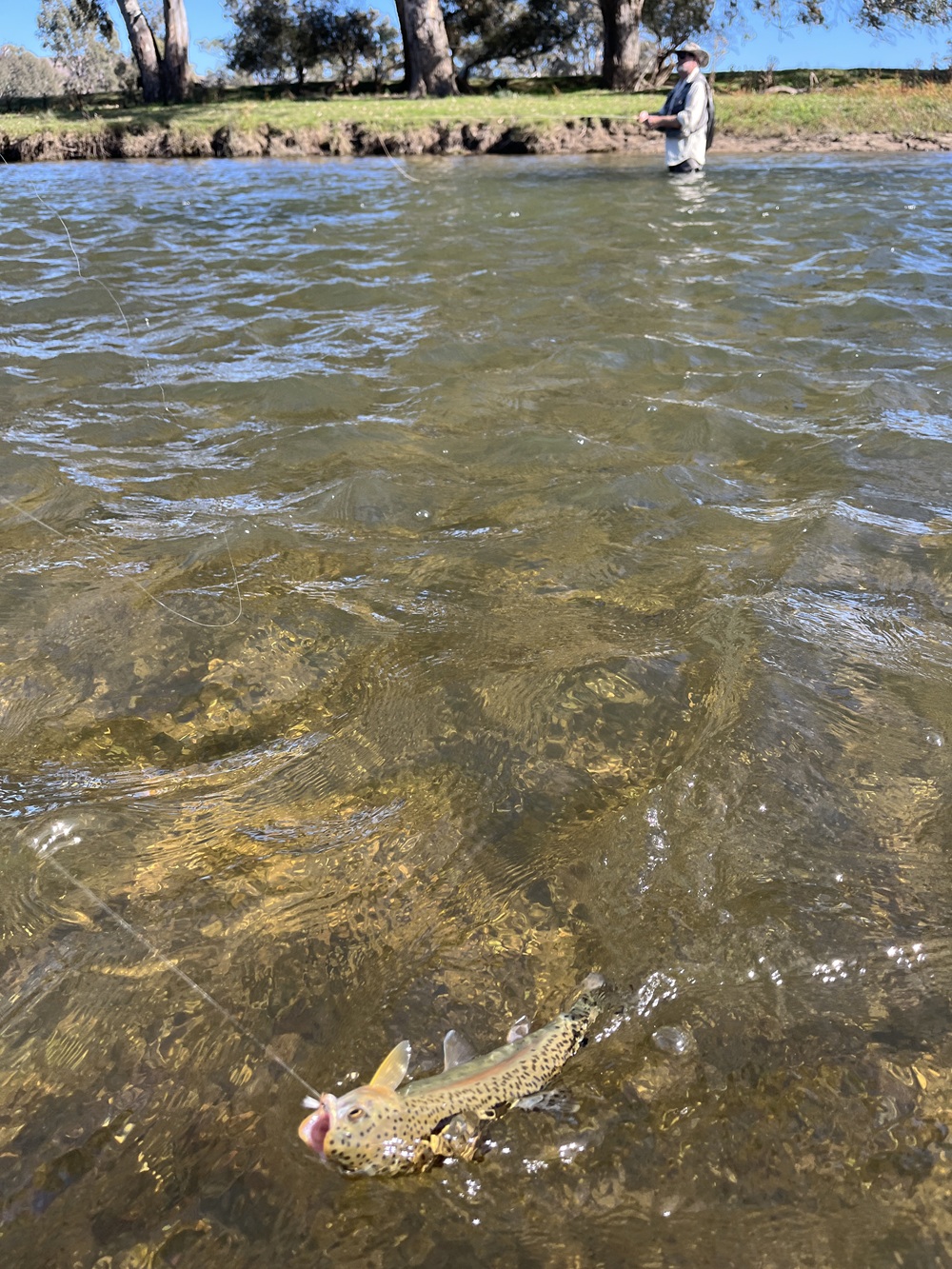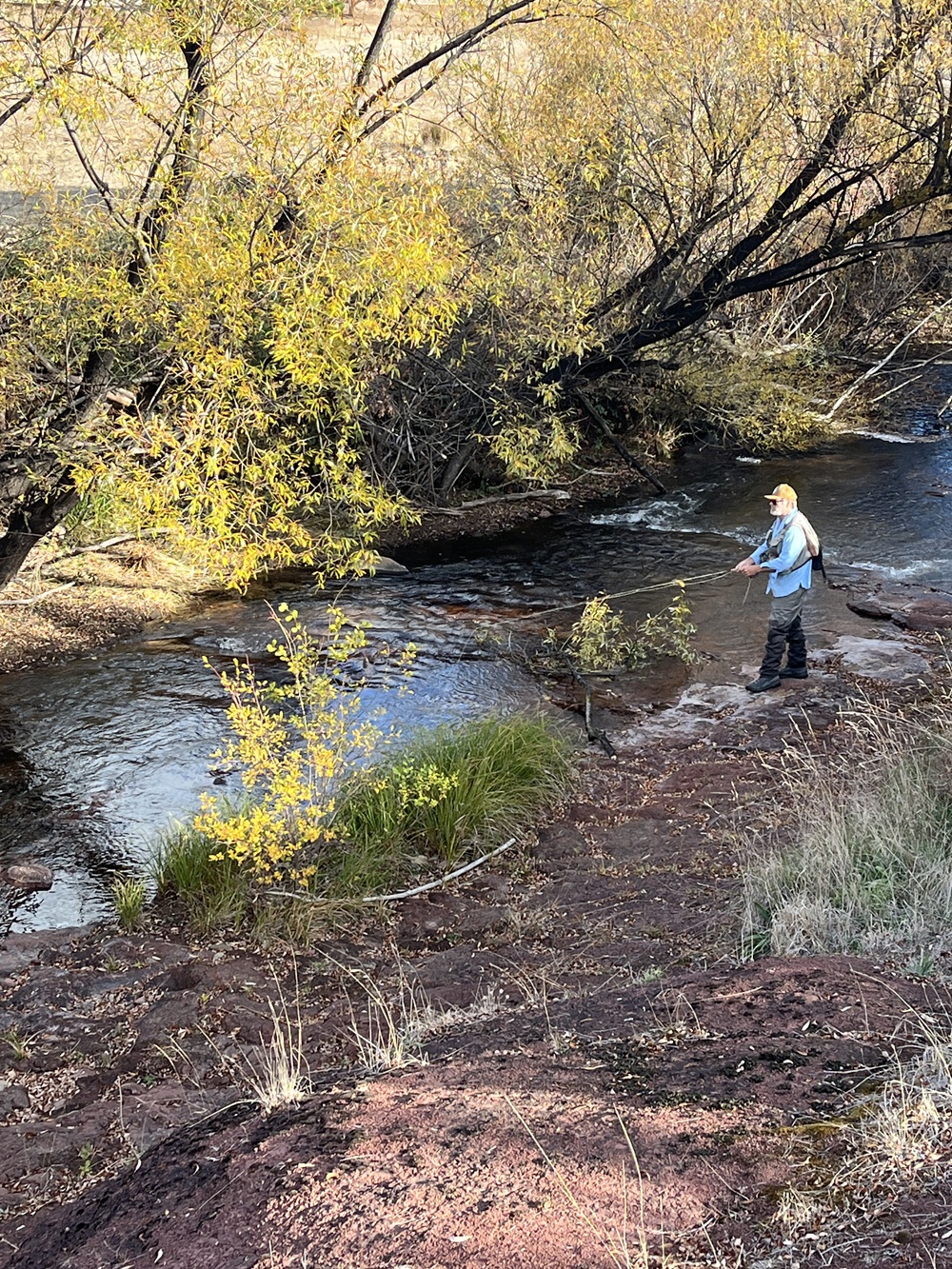
Fishing in a painting on the Howqua River.
Autumn stream fishing in north-east Victoria is usually one of the highlights of my trout fishing year: sippers, hatches, clear, stable natural streams, and tailwaters dropping from green monsters to merely big rivers. Add windless blue skies, comfy daytime temperatures (if a little brisk overnight), the glorious colours of the deciduous trees, and at least the possibility of an outsized brown feeding in broad daylight, and it can almost feel like perfection.
However, like most special events, it doesn’t last forever. In a typical year, I’d regard a week into May as probably about it for the best of this fishing, and the problem I had this autumn was stringing together enough days for a decent final fling before the window closed. I just couldn’t quite manage to time a trip for that last week of April/ first week of May.
A Rubicon brownie that was still feeding actively in the second week of May.
And yet, with an unusual period of warmth this autumn, I wondered? Would the trout and the insects oblige with a corresponding push into week two of May, when I could finally get away to the rivers above and below Eildon with JD?
Well, the answer turned out to be… sort of. I got the autumn colours at full strength, and (except for a brief downpour on day one) some lovely settled weather. And while the natural streams were a tad low, they were beautifully cold and clear. Meanwhile, the Goulburn tailwater had slowly dropped to 2900 ML/d by the time my three-day trip ended: high for a week into May certainly, but still less than ‘green monster’ size.
The Goulburn - still big, but settling nicely.
Although genuine sippers were patchy (limited to one steady hatch of tiny duns on the Goulburn late yesterday afternoon), throughout the trip, the trout were often happy to take a dry, and sometimes even preferred it to a nymph. With water temperatures ranging between a Howqua 10C, and a Goulburn 14C, it was good to see several fish still choose to swim right past the nymph, and on to the dry.
As for outsized trout, most were not at half a pound to a pound – fish I’m always happy to catch by the way. But I did have opportunities with two brown trout many times that size. One ate my nymph first cast in a shaded Delatite pool tail, thereby startling both of us for a few seconds until the hook pulled. The other was spotted by JD on the Goulburn beneath a cluster of gnarly wattles, and despite my genuine protests, he insisted I have a go. The abiding, and somewhat haunting memory I have of that impossibly thickset fish, was watching it saunter up through a patch of sunlight to nip some tiny insect off the surface with hardly a ripple.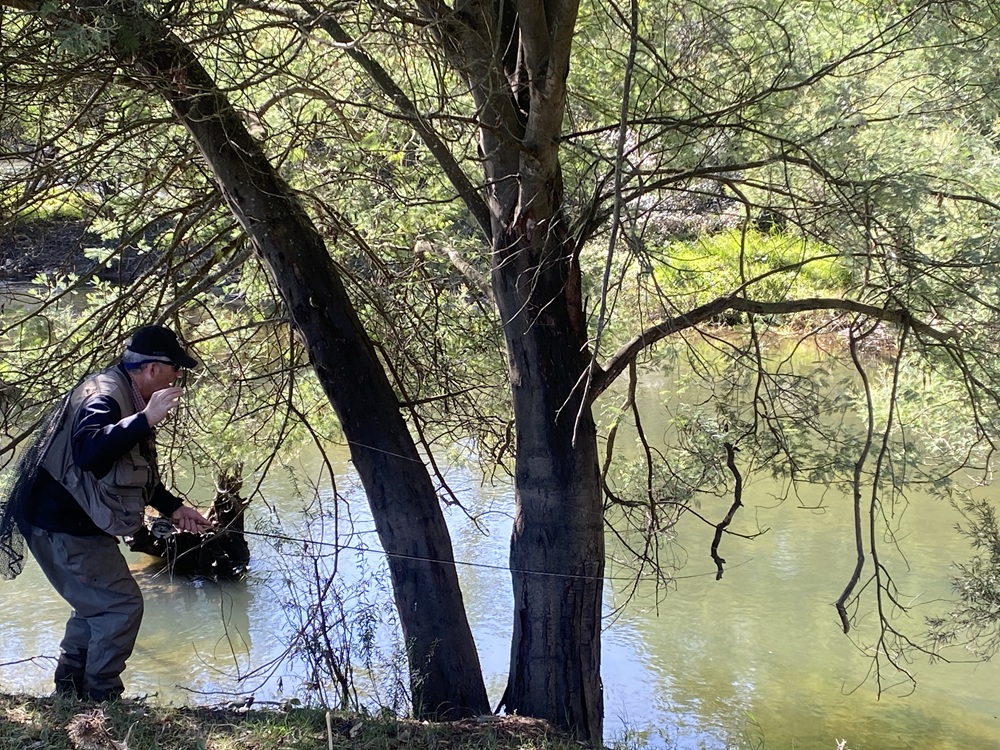
Trying to thread the needle for a Goulburn bruiser. It didn't quite work out!
My attempts to present a little parachute Adams through the chaos of redgum seedlings, thistles, and half-dead wattle branches would have done Benny Hill proud. Suffice to say that, by the time my fly actually made it onto the water, the trout was casually sauntering off with the alert but not alarmed demeanor only really big browns can muster.
Overall, it was a trip good enough to leave me thinking I’ve happily ‘signed off’ on season 24/25 on the streams, if I don’t make it back before winter. It was reassuring to see solid numbers of trout everywhere: fish you could easily miss and walk right past if you didn’t look or fish carefully in the concentrated patches of the right habitat. A solid base is certainly there for next spring.
A postcard Delatite.





